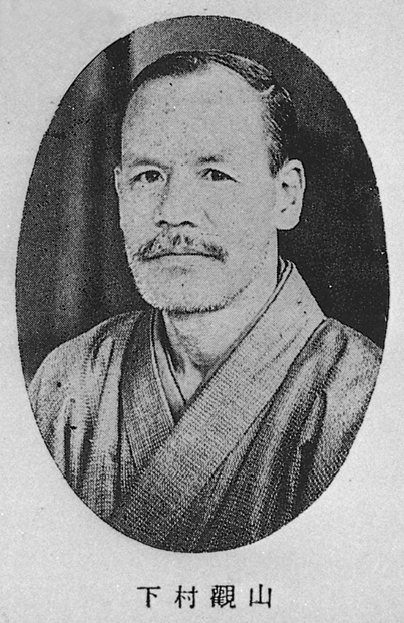- Kanzan Shimomura
Infobox Artist
name = Kanzan Shimomura

imagesize = 180px
caption = Kanzan Shimomura
birthname = Seizaburō Shimomura
birthdate =10 April 1873
location =Wakayama, Wakayama ,Japan
deathdate =10 May 1930
deathplace =
nationality = Japanese
field = Painter
training =
movement =Nihonga
works = " Yoroboshi"
patrons =
awards = nihongo|Kanzan Shimomura|下村観山|Shimomura Kanzan|extra=10 April 1873 –10 May 1930 was the pseudonym of anihonga painter in Meiji through to the earlyShowa period Japan. His real name was Shimomura Seizaburō.Kanzan was born in 1873 in Wakayama city,
Wakayama prefecture into a family of hereditaryNoh actors.Having moved to Tokyo at the age of eight, Kanzan studied under
Kanō Hōgai , and after Hōgai's death, underHashimoto Gahō . He graduated first in his class at the "Tokyo Bijutsu Gakkō" (the forerunner of theTokyo National University of Fine Arts and Music ), and became a teacher at the same institution in 1894.When
Okakura Tenshin left government service to establish theJapan Fine Arts Academy ("Nihon Bijutsuin"), Kanzan joined him, together withYokoyama Taikan andHishida Shunso . However, Kanzan returned to his teaching post at the Tokyo Bijutsu Gakko from 1901-1908, with a hiatus from 1903-1905, when he went to study inEngland .From 1914, he helped reestablish the Japan Fine Arts Academy, and in 1917 was appointed a
court painter to theImperial Household Agency . He served as a judge for both the "Bunten " and the "Inten" Exhibitions.In terms of style, Kanzan was influenced by the "
Rimpa " and the "Kano" schools, as well as early Buddhist paintings andTosa school "emaki ." To these elements, he combined the realism developed from his exposure to western art works during his stay in England.One of his representative works is a "
byōbu " titled "Yoroboshi" or "The Beggar Monk" was created in 1915 in colored ink andgold leaf on paper. It is currently housed in theTokyo National Museum , and is registered as anImportant Cultural Property by theAgency for Cultural Affairs . The screen depicts a scene from a famous Noh play of the same name. In the scene, blind monk, has been falsely accused of a crime. Disowned by his family he wanders about, living as a vagrant. Although he is now blind, he has become one with the universe and can see all that surrounds him. Kanzan borrowed heavily fromMomoyama period andEdo period style and composition, and the work shows a strong "Rimpa" influence.Notable works
*光明皇后 (1897,
Imperial Household Agency )
*修羅道 (1900,Tokyo National Museum )
*鵜鴎図 (1901, Museum of Modern Art,Shiga )
*ダイオゼニス ("Diogenes", 1903,Tokyo National Museum of Modern Art )
*木の間の秋 (1907, Tokyo National Museum of Modern Art, Important Cultural Property)
*大原御幸 (1908, Tokyo National Museum of Modern Art)
*鵜図屏風 (1912, Tokyo National Museum)
*白狐 (1914, Tokyo National Museum)
*弱法師 (1915, Tokyo National Museum, Important Cultural Property)
*春雨 (1916, Tokyo National Museum)
*楠公 (1921, Tokyo National Museum)
*景雲餘彩 (1922, Imperial Household Agency)External links
*
Wikimedia Foundation. 2010.
